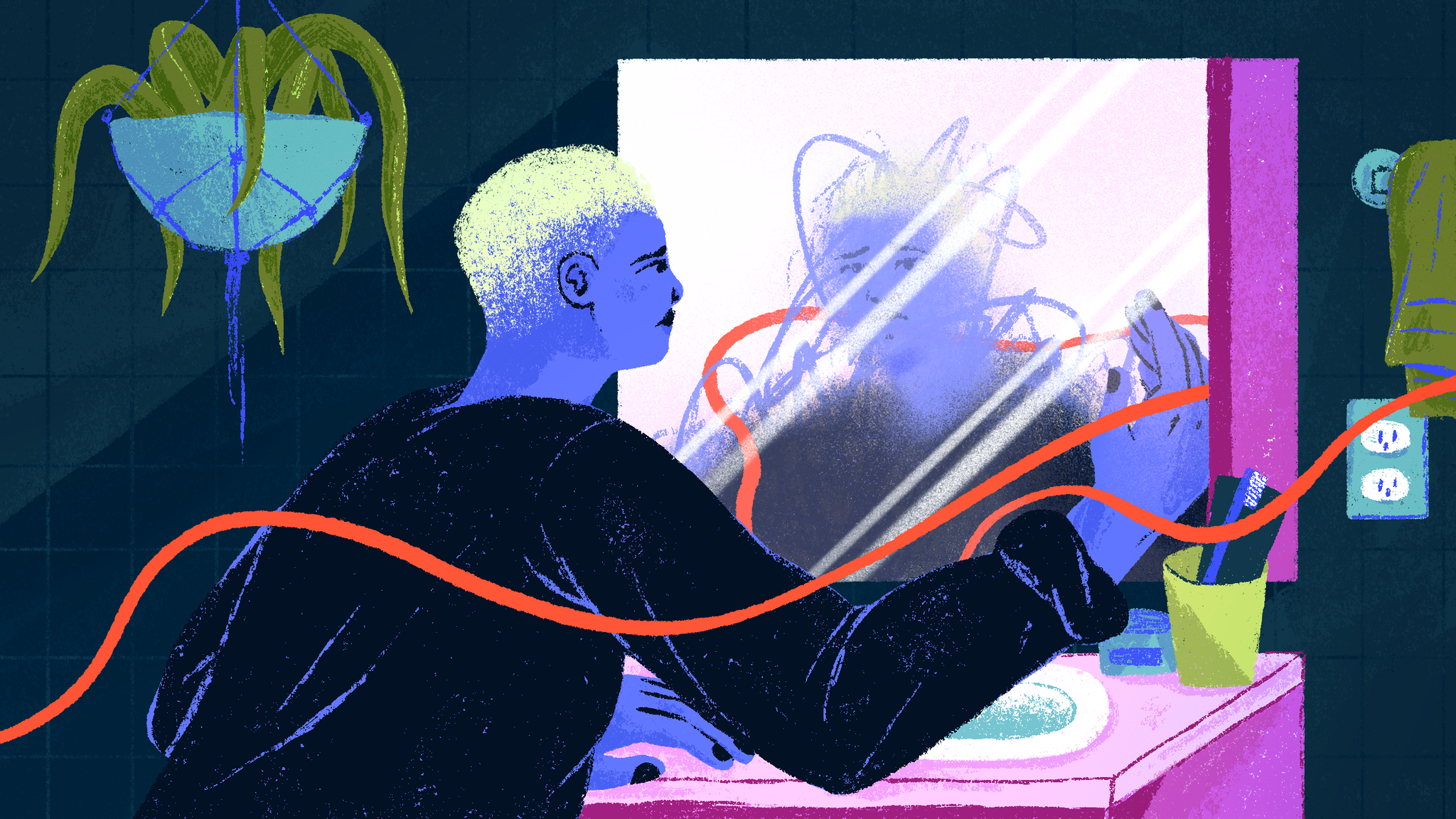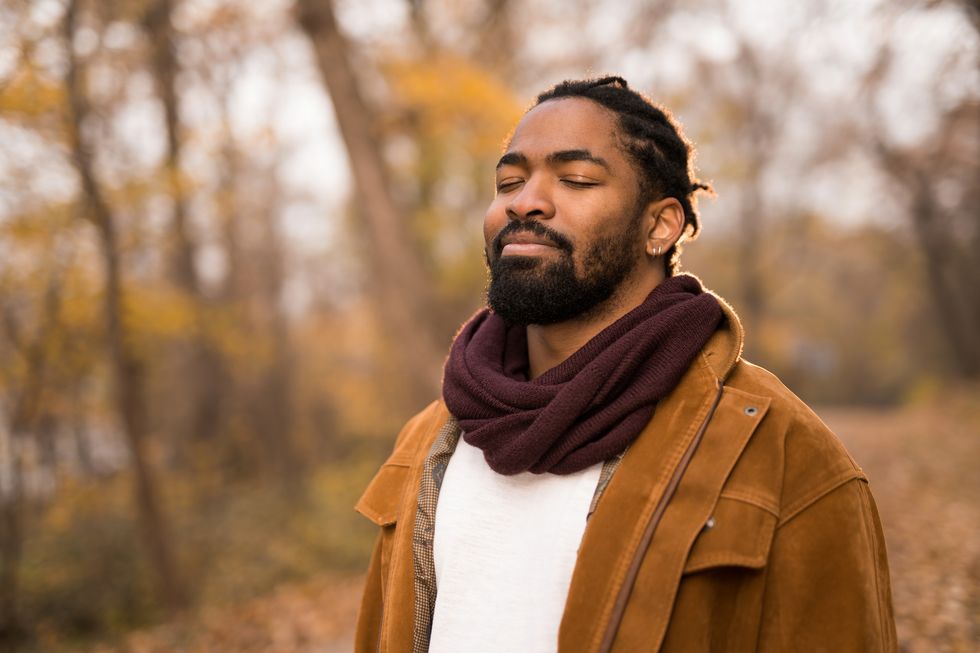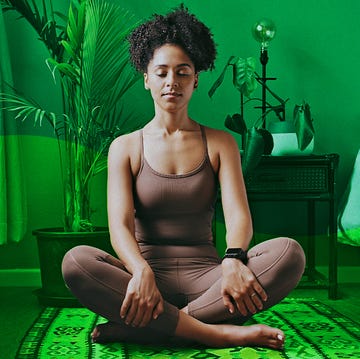Over the past two years of living through a pandemic, caring for our mental health has become more essential than ever before. The way we treat our bodies, how and with whom we spend our time, and what thoughts are center stage in our minds are vital. In the monthly Shondaland series A Path to Well-Being, we’re sharing science and strategies to help you better understand and manage your well-being in 2022.
We may collectively be experiencing some form of post-traumatic stress after enduring a spate of mass shootings, a global pandemic, and other significantly agonizing experiences that have gripped the world throughout the past few years.
“Many people suffer from functional PTSD, which is like, ‘Yeah, this stuff has happened, but I’m moving on,’” explains Bhanu Joy Harrison, a licensed clinical social worker who specializes in mindful approaches to trauma resolution. When trauma isn’t clinically diagnosed and professionally treated, it still can manifest as moodiness, anxiety, anger, addictive tendencies, or depression.
Traumatic experiences can also be associated with increased risk of self-harm and suicide. Because September is National Suicide Prevention Awareness Month and suicide remains the second leading cause of death among young people in the United States, we’re taking a closer look this month at trauma to understand what causes it and learn how to begin a healing process.
What is trauma?
Mental health professionals often differentiate between “big T” and “little t” traumas. “Big T” traumas include life-threatening experiences, such as war, natural disasters, physical or sexual violence, and catastrophic accidents. “Little t” traumas are “micro traumas that happen more frequently,” Harrison notes, including experiences of racism, sexism, homophobia, emotional abuse or bullying, poverty, and loss of a significant relationship.
“These can have quite a similar effect as the big Ts,” Harrison says, adding that most of us experience both kinds of trauma over our lifetimes. Whether large or small, trauma leaves people feeling overwhelmed and helpless to protect themselves. That element of being overwhelmed is what distinguishes trauma from ordinary stress.
“With stress, you may feel like [you] have so much on [your] plate, time is crunched, life may be difficult and challenging, but there’s enough regulation in your nervous system that you can still get to sleep and your eating is okay,” Harrison says. “Trauma tends to overwhelm the system, rendering it very dysregulated.”
That kind of dysregulation looks different for each individual, Harrison says. According to the Diagnostic and Statistical Manual of Mental Disorders — the standard guidebook for mental health professionals — post-traumatic stress disorder is characterized by hypervigilance, hopelessness, irritability, recurrent and distressing memories of the traumatic event, trouble concentrating, and sleep disturbances.
Symptoms may also include tight muscles, anxiety, shortness of breath, gut issues, headache, and fatigue. “All of these types of symptoms,” Harrison says, “can be effects of a dysregulated nervous system due to trauma.”
Trauma initially triggers a fight-or-flight response. But if those options aren’t available — like if you’re a young child who can’t fight or flee, or if the trauma is ongoing — Harrison notes that “the nervous system will default to its most primitive part, which is the dorsal vagal, or the freeze response. And that freeze response is where depression lives.”
Harrison adds, “We’re not designed to be in our fight-flight zone all the time. It takes up a massive amount of energy, so we go from this high state of activation to just utter collapse.” That’s why continuing concerns about the pandemic and fear of mass shootings can be so traumatic: They’re ongoing and contribute to a feeling of being unsafe. Here’s what Harrison suggests to help calm the nervous system and restore a sense of safety.
Tune in to your body
When feelings of anxiety and threat arise, become curious about what physical sensations you notice. Is your stomach tight? Shoulders scrunched up to your ears? Is your breathing shallow?
“Trauma is an overwhelming experience where we feel helpless,” Harrison says. “Many people feel [so] overwhelmed by their emotions or their bodily sensations that they just don’t know what to do. The ability to be curious about our own experience is a mindful tool that begins to disentangle the overwhelm. As I notice the sensation, I realize I am not the sensation.”
Harrison, who is also a certified mindfulness instructor, offers free guided meditation practices on Insight Timer about dealing with trauma and recognizing bodily sensations. “Sensation is the doorway to changing our stress physiology,” she says. “We can’t think our way out of it.”
Turn off the news
Constant exposure to messages about the pandemic, monkeypox outbreaks, wars, and mass shootings on news and social media channels can trigger a persistent sense of anxiety. “One of the ways we can help modulate,” Harrison says, “is to manage the diet of consumption of information.”
The body is always present in time, according to Harrison, so seeing upsetting content on our screens tells our nervous system we’re currently in danger, even if we’re safely sitting on the couch in our living room.
“We get information about our world through our five senses,” Harrison says. “[As] we hear and see stuff repetitively on TV, we get this cumulative stacking of trauma when, actually, we may be 100 percent safe.”
Tragedies and traumas capture our attention because we’re wired to be attuned to potential dangers, Harrison says, so we have to intentionally turn our focus to calm, goodness, beauty, and safety, which is easier when we’re not bombarded with negative media.
Recognize your resources
While living in a safe neighborhood or secure home may be a privilege, Harrison says we can all identify resources that make us feel calm and steady. It could be listening to music, knitting a sweater, or snuggling with a pet.
Harrison advises making a list of these resources for when anxiety strikes — and don’t just think about them. Embody them. For instance, don’t simply imagine yourself knitting. Feel the softness of the yarn, the smoothness of the needles, the calmness in your center as you weave each stitch. Or don’t just picture a good snuggle with Fluffy. Connect to the feeling of their warm body, soft fur, and the love you feel when you look at that sweet face.
“This is what, in psychology, is more a bottom-up approach rather than the top-down, head-thinking approach,” Harrison explains. “This goes right from our sense organs into our brain stem.”
It’s a way of telling your nervous system that you’re safe. And if these feelings persist, it might be time for more help. The new, shorter national suicide and crisis hotline, 988, which launched in July, can connect callers with mental health resources.
Sandy Cohen is a Southern California-based writer, health and wellness coach, and host of the Inner Peace to Go podcast. Follow her on Twitter @YouKnowSandy.
Get Shondaland directly in your inbox: SUBSCRIBE TODAY
















